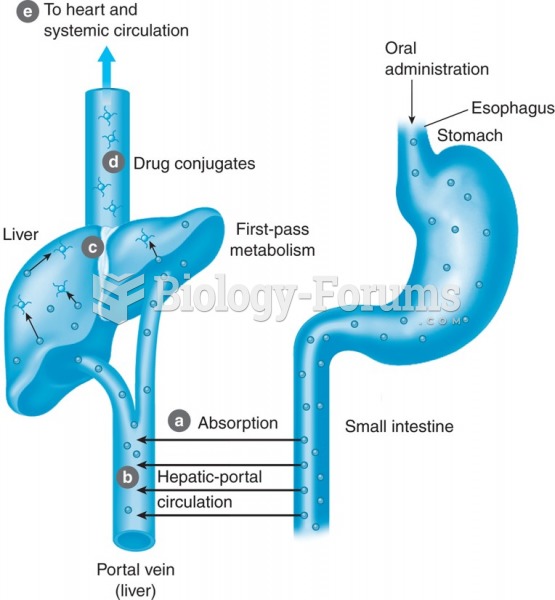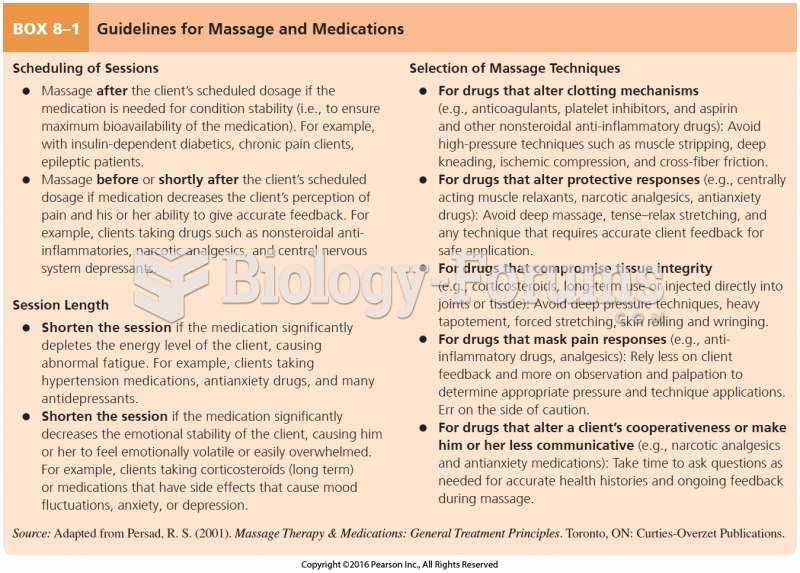Answer to Question 1
A
Feedback
A Correct. Gastric emptying time and pH are two factors influencing the absorption of orally administered medications.
B Incorrect. The time of day a medication is administered is marginally a factor in the absorption of orally administered medications, but only as related to mealtimes, the content of the stomach.
C Incorrect. The condition of the kidneys is related to the excretion of the medication, and has nothing to do with the absorption of orally administered medications.
D Incorrect. The iron content of the blood does not turn on or shut off or limit the absorption of orally administered medications via the stomach.
Answer to Question 2
C
Feedback
A Incorrect: Household smokers may increase the prevalence of asthma and respiratory problems. However, second had smoke will not affect the prevalence of anemia or gastrointestional infections.
B Incorrect: Heredity plays a role in the etiology of asthma and other respiratory illnesses such as cystic fibrosis because these disorders tend to appear in families. However, a family history of other illnesses such as anemia and gastrointestinal infections does not increase their prevalence.
C Correct: Children who live in poverty have diminshed physical health, higher mortality and morbidity, and decreased access to health care than nonpoor children. Therefore, they experience an increased incidence of physical and emotional health problems.
D Incorrect: Lack of education and skills are at the root of poverty. So family income has significant effects on the well being of children. Yet, poverty is the major factor that increases the prevalence of illness.







